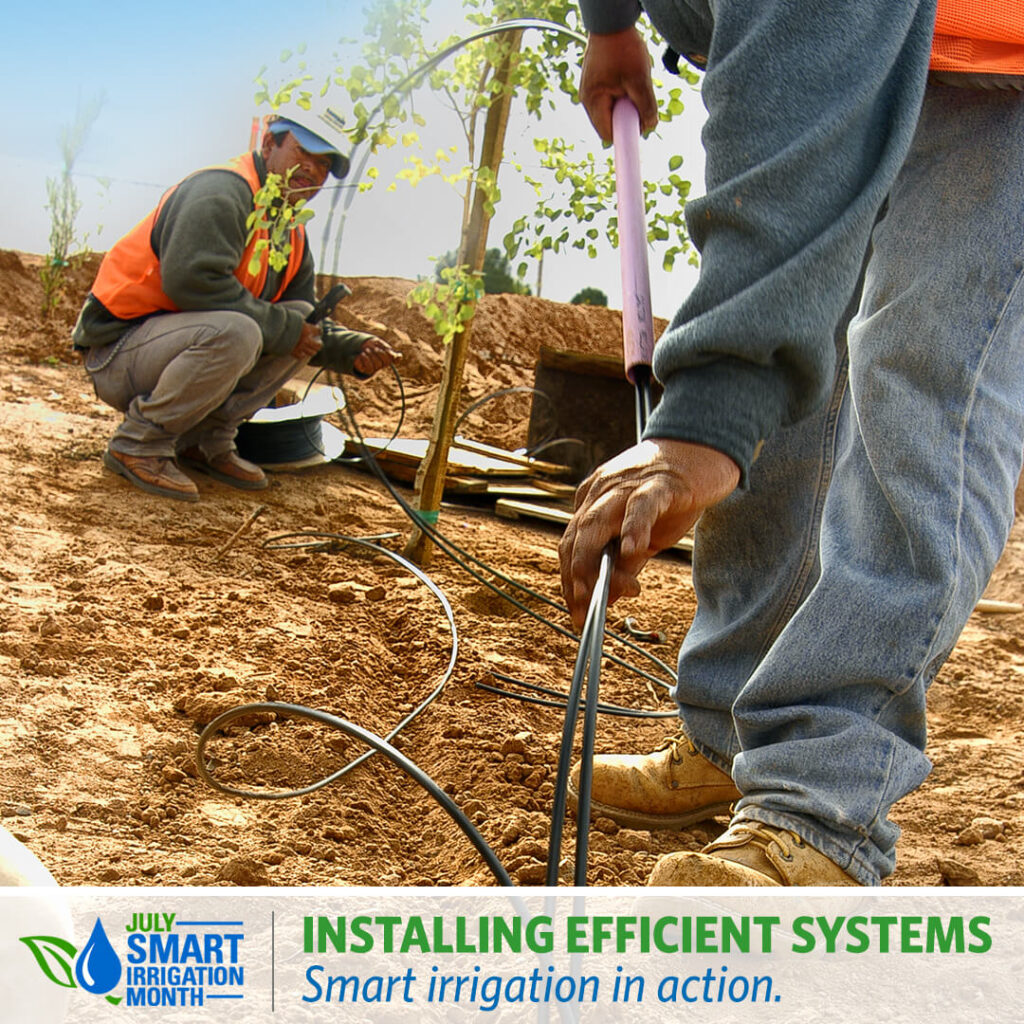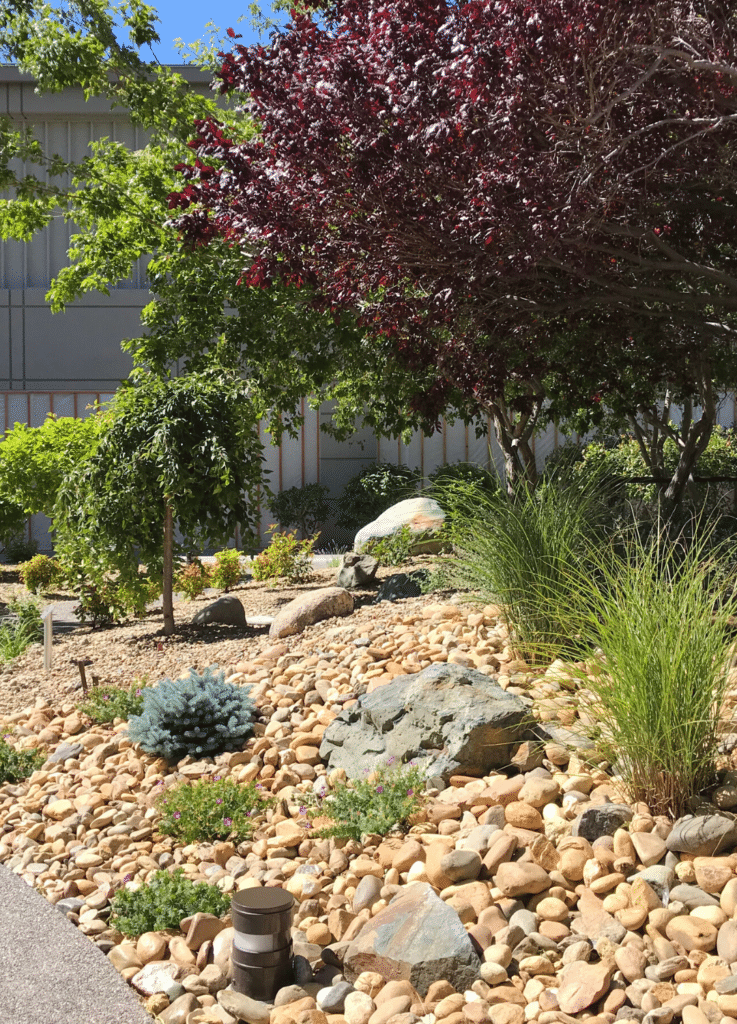When properly installed, drip irrigation will reduce water waste and improve water efficiency. Studies suggest a 30-50% reduction in water waste compared to overhead sprinkler irrigation. Turfgrass is still generally irrigated by sprinklers, but other plant materials such as shrubs, perennials, annuals and trees can be watered with drip irrigation.
It’s the last week of Smart Irrigation Month. Not familiar with Smart Irrigation Month? “Smart Irrigation Month is an Irrigation Association initiative celebrated throughout July to promote the social, economic and environmental benefits of efficient irrigation technologies, products and services in landscape, turf and agricultural irrigation.” Learn more.
So why is drip irrigation more efficient?

Sprinkler irrigation and micro sprayers release water at gallons per minute, dispelling large amounts of water through the air with the hopes that most of it reaches the roots of the plant material.
Water from sprinkler irrigation may evaporate before it hits the soil. As evapotranspiration and wind is relatively high in Nevada compared to other locations, water can quickly evaporate into the atmosphere before the plant can take it up through the roots. Therefore, we recommend scheduling irrigation earlier in the morning when it is cooler and there is less wind to account for the lost water due to evaporation and wind.
We also suggest using matched precipitation, high-efficiency nozzles and sprinklers with built in pressure regulators for irrigating turfgrass. The larger water droplets are less effected by evaporation than high pressure sprayers.
Also, with sprinkler irrigation, you have inefficiencies in the step up that can contribute to water waste, such as water that sprays on hard surfaces where it is evaporated or runs off into storm drains.
On the other hand, drip irrigation, when using dripping emitters, releases water at a rate of gallons per hour. Water drips slowly from the irrigation emitters onto the surface of the soil. Water is applied directly to the soil around desired plant material closer to the root zone. If water is applied underneath mulch, moisture is held longer in the soil because mulch insulates and protects against increase evaporation during hotter months.
Besides water efficiency, why should I use drip irrigation?
There are several other advantages to using drip irrigation over sprinkler for watering plants besides turfgrass.
- You won’t need to level the land before installing drip.
- You can easily account for irregular shapes as drip irrigation tubing is malleable.
- Because you are applying water directly to the root zone, you can keep soil moisture at field capacity and therefore, improve plant growth and health.
- Drip irrigation can also reduce weed growth due to targeting water practices.
- With reduced overhead water application, drip irrigation can help control fungal disease that spread through wet foliage.
- Drip irrigation can easily be expanded for new plant material and emitter lines can be repositioned, as needed.
- Drip irrigation doesn’t require extensive digging for installation or underground repairs.
- Apply water slowly to plant material up to 24 gallons per hours with point source emitters and 0.9 gallons per hour with inline emitters. It’s easy to calculate how much water you need to apply for a given plant.

If you are looking to get started with drip irrigation, check out University of California Master Gardener Program of Sonoma County site on Drip Irrigation Basics. You can do a lot yourself, but if you need the help of a certified professional, contact Reno Green Landscaping today!